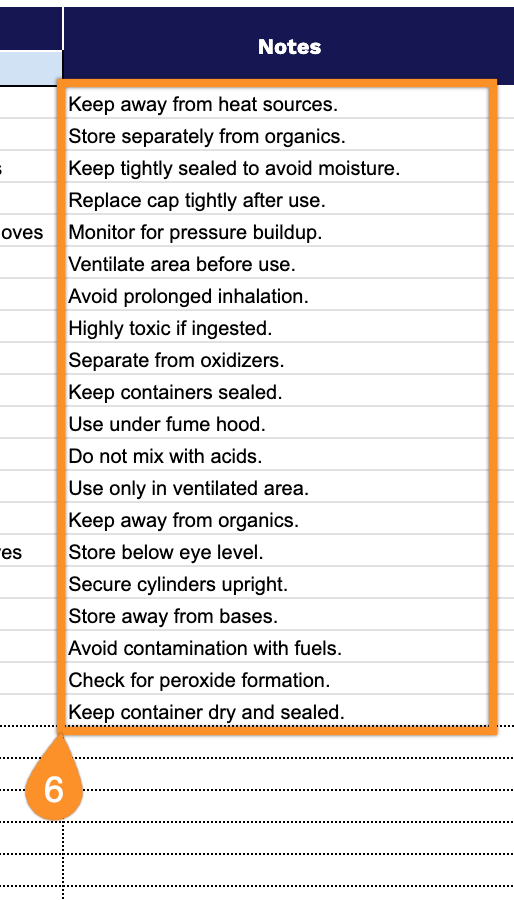Tracking chemicals shouldn’t require a chemistry degree. Many workplaces rely on outdated systems, scattered notes, or incomplete records that leave them vulnerable to compliance issues and safety gaps.
Our free template changes that by providing a simple and organized way to document the chemicals you have, where they’re stored, and their associated hazard information, all in one place.
Built with OSHA requirements in mind, it is available in Google Sheets, Excel, and PDF formats, designed to fit seamlessly into your existing workflow without adding unnecessary complexity.
Quick Jump
ToggleWhat Is an OSHA Chemical Inventory Spreadsheet?
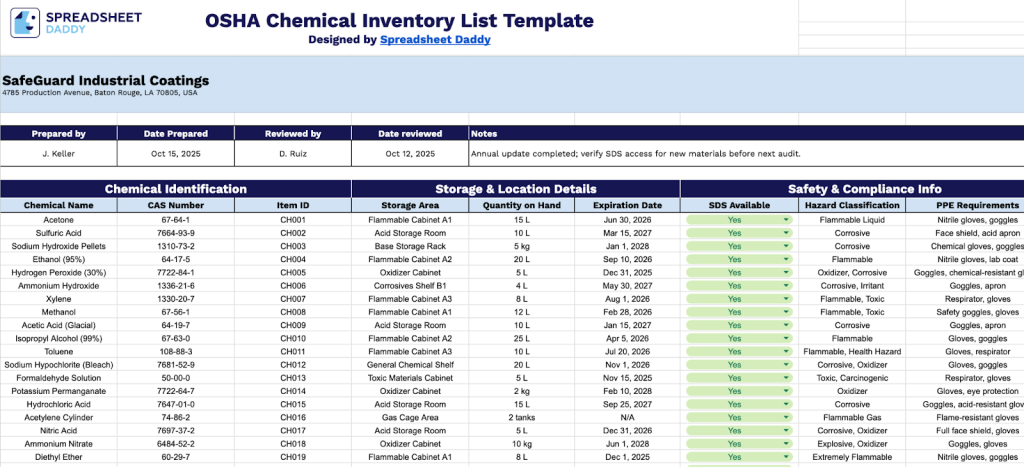
An OSHA Chemical Inventory Spreadsheet is a document used to track and manage all hazardous chemicals present in a workplace.
This inventory ensures that employees have access to information about dangerous substances and helps organizations identify potential safety risks and manage chemical storage appropriately.
Download Spreadsheet Daddy’s Free OSHA Chemical Inventory Management Spreadsheet
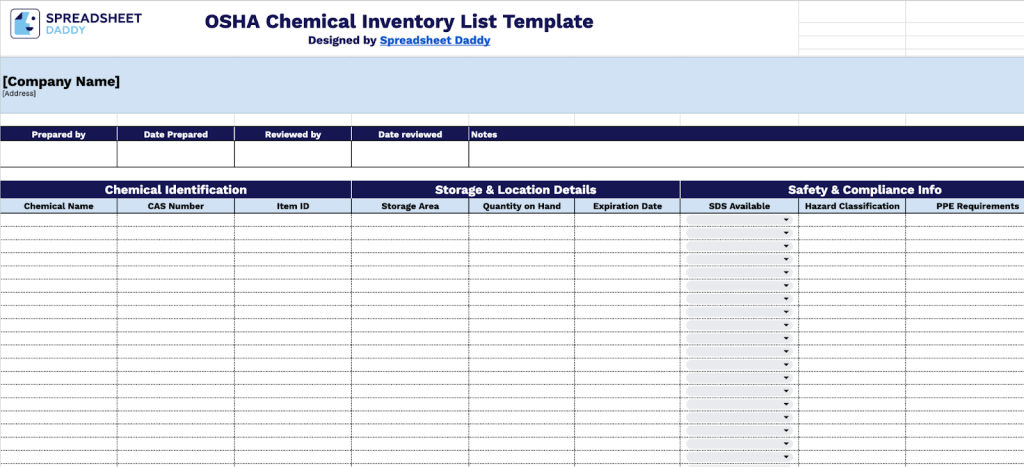
Our OSHA Chemical Inventory List Template helps you track and manage all chemicals in your workplace, ensuring compliance with OSHA regulations and keeping your team safe.
The template is also flexible, allowing you to tailor it by adding or removing columns based on what works best for your business and industry.
What’s included
- Chemical identification and tracking: Captures essential chemical data, including the chemical name, CAS number for precise identification, and a unique item ID for tracking purposes within your facility.
- Storage and safety documentation: Tracks storage area designation, expiration dates to prevent using outdated materials, whether Safety Data Sheets (SDS) are available, hazard classifications to identify potential risks, and required Personal Protective Equipment (PPE) for safe handling.
- Compliance and accountability: Includes fields for the person who prepared the inventory, the date it was ready, the person who reviewed it, and the date of review, creating an audit trail and documentation structure for regulatory compliance.
- Flexible notes section: Provides space for additional contextual information, special storage instructions, usage notes, or any other relevant details that support workplace safety and chemical management.
How to Use Our OSHA Chemical Inventory Spreadsheet Template
1. Download our OSHA Chemical Inventory template as an Excel file, PDF document, or create a personal Google Sheets copy to track your facility’s hazardous chemicals.
2. Document your company’s name, physical address, stock coordinator’s information, and the date completed. Record the manager’s name and the date of the inspection. Apply the Notes section to record any relevant information.

3. Complete the Chemical Identification section by entering all essential product information for accurate tracking:
- Chemical Name: Enter the complete product name as it appears on the container label or SDS.
- CAS Number: Record the Chemical Abstracts Service registry number for precise chemical identification.
- Item ID: Assign or enter the unique internal inventory tracking number for this chemical.
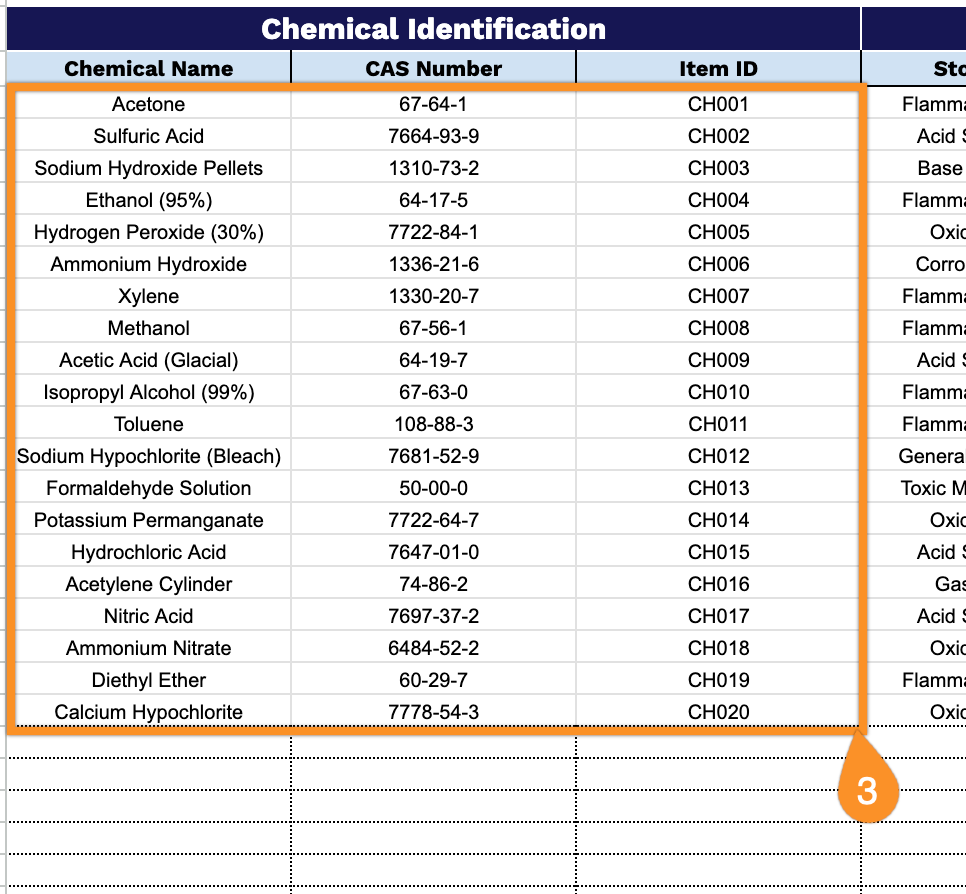
4. Fill in the Storage & Location Details section by documenting where and how much chemical is maintained:
- Storage Area: Specify the exact location where the chemical is kept (cabinet, room, building designation).
- Quantity on Hand: Record the current amount available, including the unit of measurement (e.g., gallons, pounds, liters).
- Expiration Date: Enter the date by which the chemical expires or must be disposed of, as specified by the manufacturer.
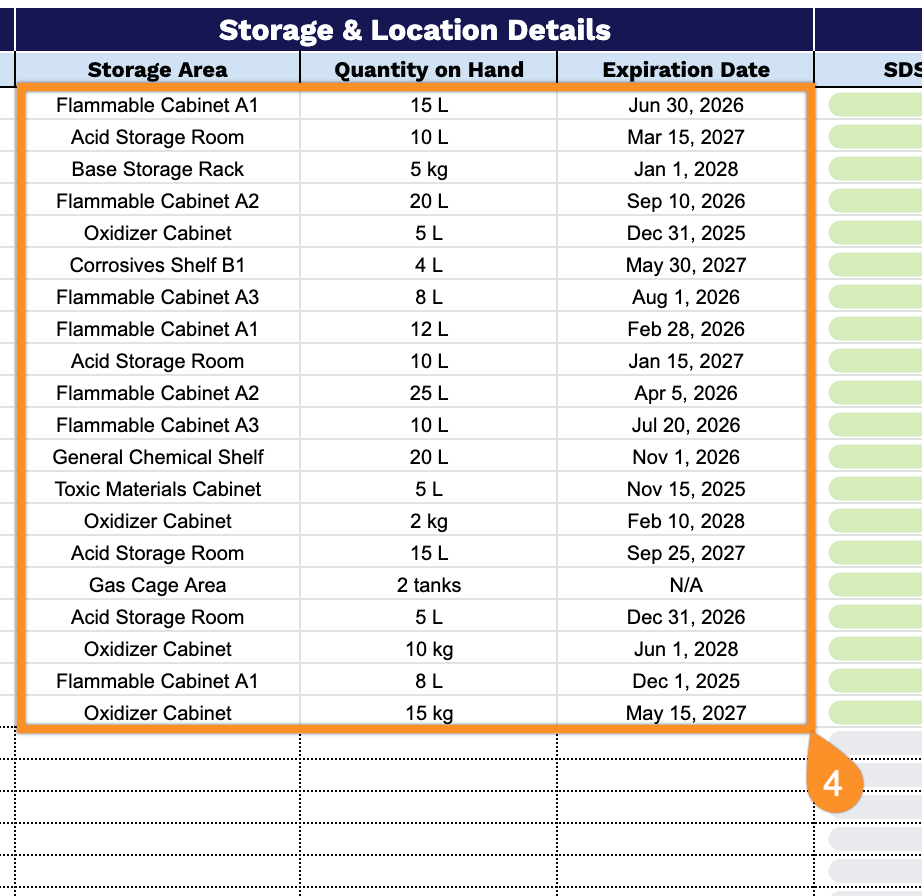
5. Document all required safety information in the Safety & Compliance Info section:
- SDS Available: Indicate whether a current Safety Data Sheet is on file and accessible to employees (Yes/No).
- Hazard Classification: Specify the GHS hazard categories applicable to this chemical (flammable, corrosive, toxic, etc.).
- PPE Requirements: List the personal protective equipment needed when handling this substance (gloves, goggles, respirator, etc.).
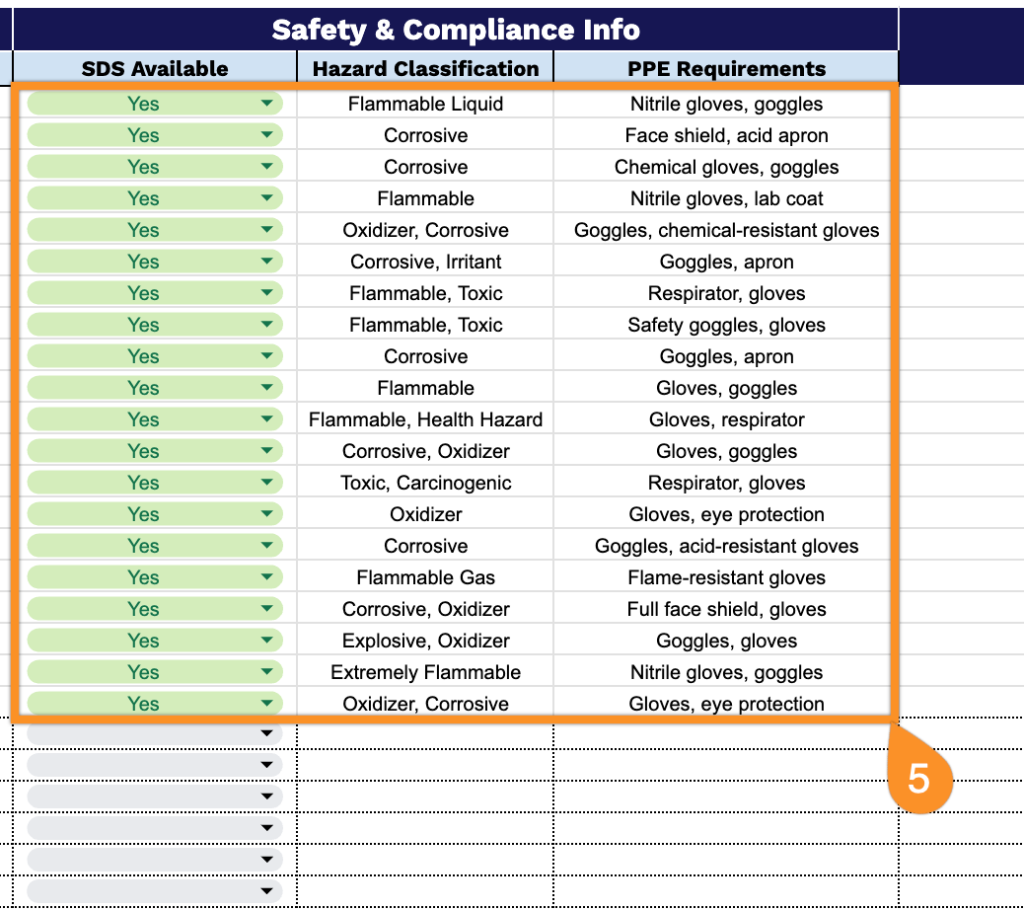
6. Record any additional safety-related information applicable in the Notes field.
